Roman gladiators were professional fighters who entertained audiences in the Roman Empire with their battles against other gladiators, wild animals, and criminals. Gladiatorial games were a popular form of entertainment in ancient Rome and were usually held in amphitheaters such as the great Colosseum in Rome.
A bloody form of capital punishment to entertain the masses, gladiatorial games were rarely fair. Gladiators were usually slaves, prisoners of war, or criminals, who were trained in special schools to become skilled fighters, and while some captured soldiers were fortunate enough to attend a gladiator school or even receive prizes for their victories, their days were numbered.
Table of Contents
Who Were Roman Gladiators and What Was Life Like for a Gladiator?

The life of a gladiator was dangerous but did come with a number of benefits that a person might not have if they were instead sent to the mines.
Most gladiators were slaves, and the worst were sent to their deaths against lions or unarmed soldiers. However, when we picture the typical gladiator, we think of the man with weapons and armor, fighting lions or other soldiers, sometimes even chariots.
These gladiators were often captured soldiers considered too honorable to be outright killed, or those from the lower classes who saw it as a chance to receive regular food, shelter, and a small chance at being chosen as guards or soldiers in the future. Some lucky gladiators even found fame and fortune, with Nero giving the gladiator Spiculus his own mansion. By the end of the Roman Republic, it is estimated that half of all gladiators were volunteers.
Gladiators would attend special schooling to become world-class fighters, where they would sleep in barracks around a central courtyard in which they would practice. The gladiators were segregated according to both social and gladiatorial classes and potential opponents were kept separated. Punishment for even the smallest infractions would include beatings and even death.
Despite being slaves, the owners of gladiators understood that they required a minimal amount of comfort in order to be fighting fit. Gladiators would be fed a high-energy diet that consisted of boiled beans, oatmeal, dried fruit, and barley. They would have regular massages and good medical care. The famous physician, Galen, spent part of his training at Pergamum Gladiator School and wrote a little about it. It is here that he came to deny Aristotle’s belief that man used his heart to think, having seen mortally wounded men remain lucid.
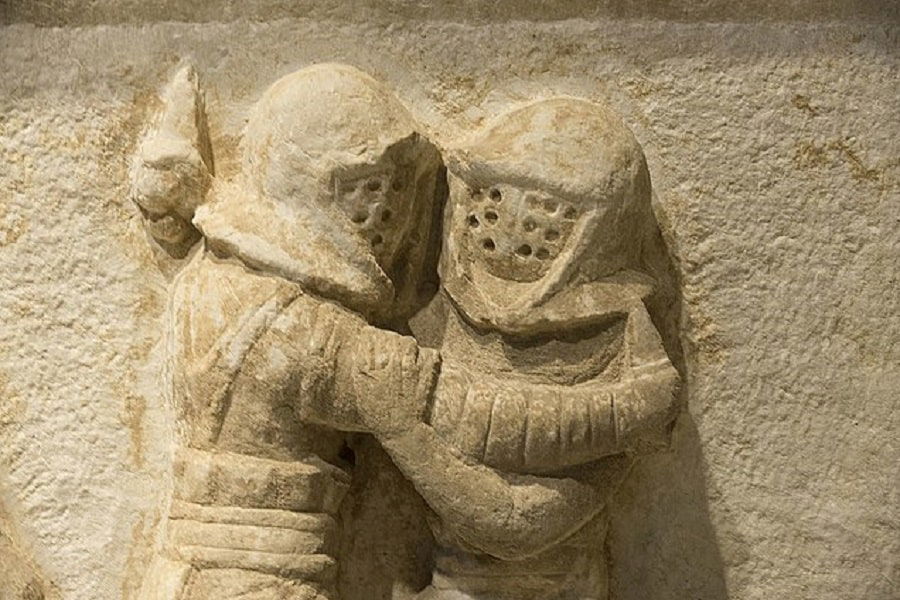
While training, gladiators would use blunt wooden versions of their weapons – while less lethal, there were still many recorded instances of serious injury and death. Training included how to use different weapons, drive a chariot, and even the psychological preparation for an unflinching death. It was the defeated gladiator who did not flinch that was most likely to be granted leniency in the arena.
Gladiators did not have any particular religious belief other than what they brought from their previous life. A once-popular view was that gladiators would professionally dedicate themselves to the Greco-Roman goddess Nemesis, but there is no archeological or contemporary writing that suggests this is actually the case. The concept of a gladiator’s oath was a popular fiction of the 19th century but has no basis in history.
While gladiators fought to the death, and most gladiators would die within their first fights, the best fighters could survive close to a dozen bouts. Archeological records have uncovered evidence that some gladiators survived over a hundred fights, while there are many examples of gladiators who retired after years in the arena. It has been estimated that the average lifespan of a gladiator was approximately 27 years, though it is unknown the age at which most gladiators began fighting. During the height of gladiatorial popularity, over 8000 men a year would die in the arena.
The gladiator could prepare for death, however, and receive a proper burial if they took out a form of life insurance through a “collegia” or union. Some said unions would also include a pension of compensation for the family of the gladiator. Because of this, today’s historians have been able to piece together the lives of gladiators based on their tombstones and memorials, which would often include details such as how many appearances they made in the arena, or even how many defeats they survived.
How Were Roman Gladiators Treated?
Despite it being possible for some gladiators to be given rewards by their patrons, and even have fans, the gladiator class was still an underclass. Those that were not slaves captured in war often came from the lower classes in the hope of being one of those few who received riches. The ancient volunteer gladiator could be considered a more violent and deadly form of today’s clowns – well-skilled but rarely respected unless at the very top of their career.
What Were the Four Types of Roman Gladiators?
Roman gladiators were generally separated into different types based on the weapons they used, the style of combat they engaged in, or where they were from. While there are over a dozen types, there are four main classes that are talked of today: the Samnites, the Thraex, the Myrmillo, and the Retiarius.
The Samnites
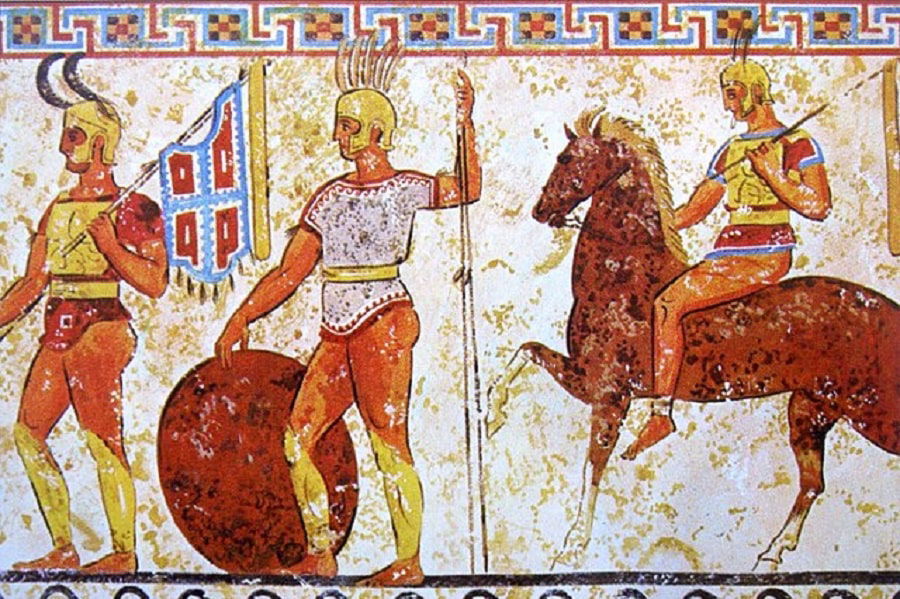
Named after the slaves of Samnium, the Samnites would use a short rectangular shield, shortsword, helmet, and greave (leg armor). This armament was quite similar to the Samnium warriors who were defeated, and the first gladiators were captured soldiers who were mocked. Later gladiators who wore this type were required to do so as a form of mockery of the Samnium people.
The Samnite was one of the earliest gladiator types during the Roman empire. When Samnium later became an ally with Rome under Augustus, the “Samnite” gladiator was abandoned for other types.
The Thraex
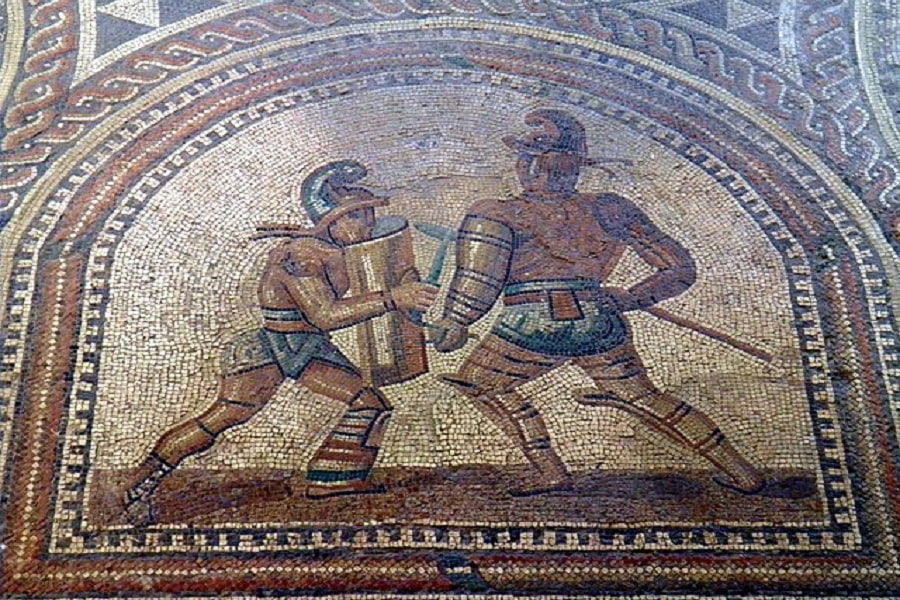
The Thraex, or Thracian gladiator, would use a small, circular shield and sword. These gladiators are the ones we most associate with the spectacle today. Spartacus was a Thracian.
The Thraex were often better armored than other gladiators and were the most popular of the many types. Most Thraex gladiators were captured soldiers and often would be shown mercy in order to see them in battle.
The Murmillo
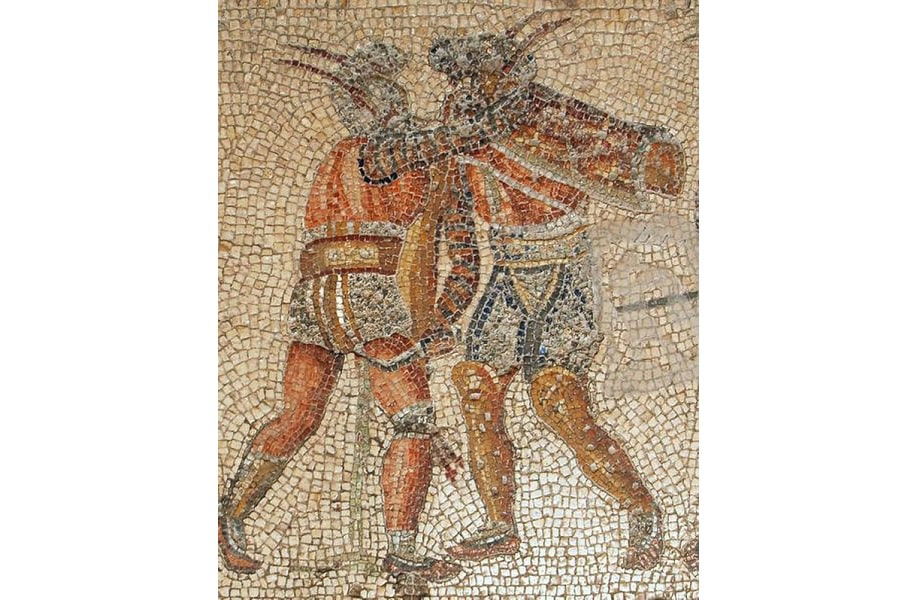
The Murmillo was a class of gladiators based on the fighting style of the Gauls. With a large, rectangular shield, and short sword, they were often paired with Thraex for their similar fighting styles. However, recent evidence suggests they also often fought Retiarius gladiators as their different styles would entertain crowds. The Murmillo gladiator needed to be large and strong in order to use their heavy shield, but this also made them quite slow. The Retiarius, on the other hand, was fast and nimble – wary of being hit but able to get in blows before getting out of the way.
Murmillos were some of the most commonly depicted gladiators in art, with examples found in the graffiti of Pompeii, carved onto pottery, and even turned into bone handles of knives and short swords.
READ MORE: The Ancient Weapons of Old Civilizations
The Retiarius
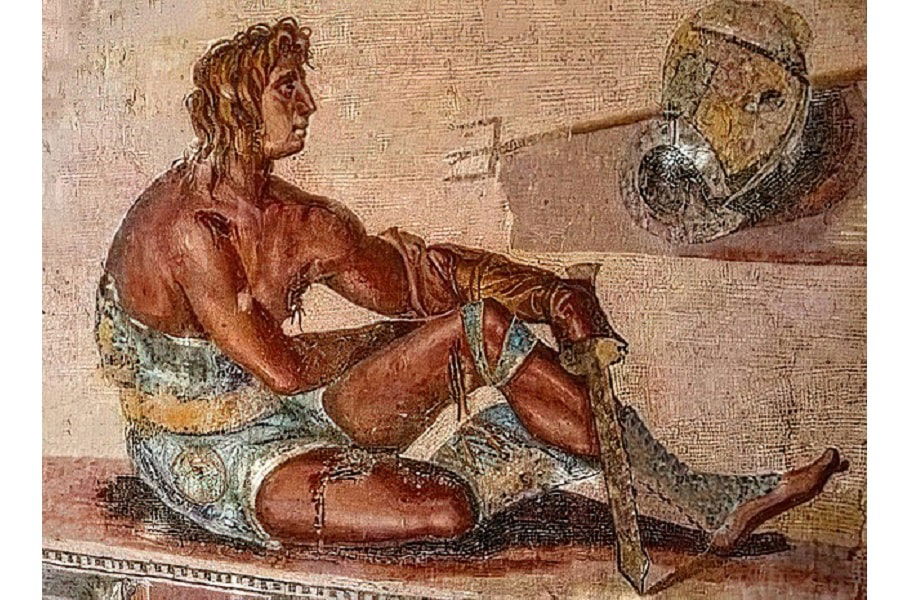
The fastest of the gladiatorial types, the Retiarius fought with equipment based on the fisherman. They would use a weighted net or trident as weapons, and the little armor they had was made of light leather. The Retiarii (that class of Retiarius gladiators) were considered effeminate and weak, the lowest of the gladiatorial classes. Juvenal and other writers considered the Retiarii as having little honor and even wrote that other gladiators were offended when placed against them.
Other Types of Roman Gladiators
While there were four main classes of gladiators, records of tournaments show that occasionally other types would appear. Likewise, there were sub-types, different versions of Thraex or Retiarii, which were given their own title. Some of the more interesting types of gladiators included:
- The Bestiarius – those who would fight wild beasts, especially lions. These gladiators were often sent in naked, as prisoners condemned to death, but some were volunteers allowed to have weapons and armor.
- The Cestus – who would use leather and metal gloves and engage in hand-to-hand fighting.
- The Essedarius – or chariot-rider, would fight from their vehicle and continue fighting once dismounted.
- The Laquearius – a sub-type of the Reiarii, would use a Lasso rather than a net.

Who Was the Greatest Roman Gladiator?
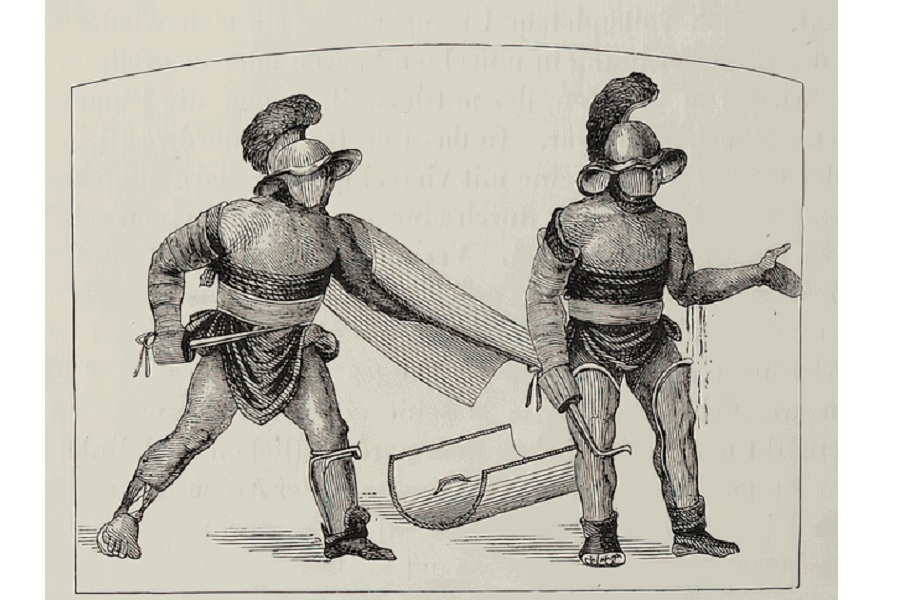
The most famous gladiator known today is the Thracian Spartacus. It is unknown, however, if he ever saw the inside of an arena as he escaped the gladiatorial school in which he was held.
It is unknown which gladiator held the most “wins” in the arena, but the chariot fighter Publius Ostorius was said to have won 51 matches before eventually being beaten by Scylax. He was spared from death during this match, but it is unknown what became of him after. An unknown gladiator had marked on his tomb that he had won 150 bouts.
Who Was Spartacus?
Spartacus was a Thracian gladiator who, along with 70 to 78 other prisoners, escaped from the gladiatorial school run by Lentulus Batiatus in ancient Capua. These prisoners then formed a rebellion that would become known as the Third Servile War.
There is little biographical detail about Spartacus, and what has been written is likely more myth than history. Most of the information comes from the works of Plutarch, in his text “Life of Crassus.” In his heroic tale of the events, Plutarch describes the gladiator as “more Hellenic than Thracian” and offers an odd tale of prophecy to the biography.
It is said that when he was first brought to Rome to be sold, a serpent was seen coiled about his face as he slept, and his wife, who was of the same tribe as Spartacus, a prophetess, and subject to visitations of the Dionysiac frenzy, declared it the sign of a great and formidable power which would attend him to a fortunate issue.
Upon escaping the school, Spartacus and his men hijacked a shipment of weapons and began a bloody war that would only end with his death.
In modern times, Spartacus has become a symbol of the oppressed. Karl Marx and Adam Weishaupt referred to him, and during the war of independence for Haiti, Toussaint Louverture would refer to himself as “The Black Spartacus.”
Today, when people think of Spartacus, they are inclined to think of Kirk Douglas in the bio-pic directed by Stanley Kubrick. A famous scene in which many men stood together yelling, “I am Spartacus!” is now used in both homage and parody by those wanting to explore the concept of solidarity or conformity.

Were There Female Gladiators?
The female gladiator, or gladiatrix, was not entirely uncommon in Ancient Rome. The mentions we have of them talk of half-naked women expected to fight each other, or animals, though never men. Juvenal wrote about one such woman, Mevia, who “fights a Tuscan boar, with bare breasts, gripping the spear.” Some accounts even describe these women as “amazonian.”
READ MORE: Warrior Women from Around the World: History and Myth
There is no evidence, however, that there was a school for female gladiators as there was for men. However, the academic Mark Vesley believed that some youth organizations would train young women in combat, often with the intention of displaying them during gladiatorial games. Such schools had been mentioned in inscriptions as being in Numidia and other parts of Africa. Likewise, there is very little evidence that female gladiators had the same life insurance as males, but some may have been buried in similar ways.
When Were the First Gladiatorial Games Held?
The Roman historian, Livy, believed that the first gladiator games were fought in 310 BCE. According to him, they were held by the Campanians in celebration of their defeat of the Samnites. The earliest known gladiator schools have been found in the Campanian region of Italy, and tomb frescoes from the city of Paestum show gladiators fighting. Some historians today argue that such events may have occurred even hundreds of years prior, however, but were not of enough historical significance to have been recorded.
The final gladiator games that involved the death of combatants were likely held sometime around 536 CE. However, human history continues to record fights and mock battles to this day.
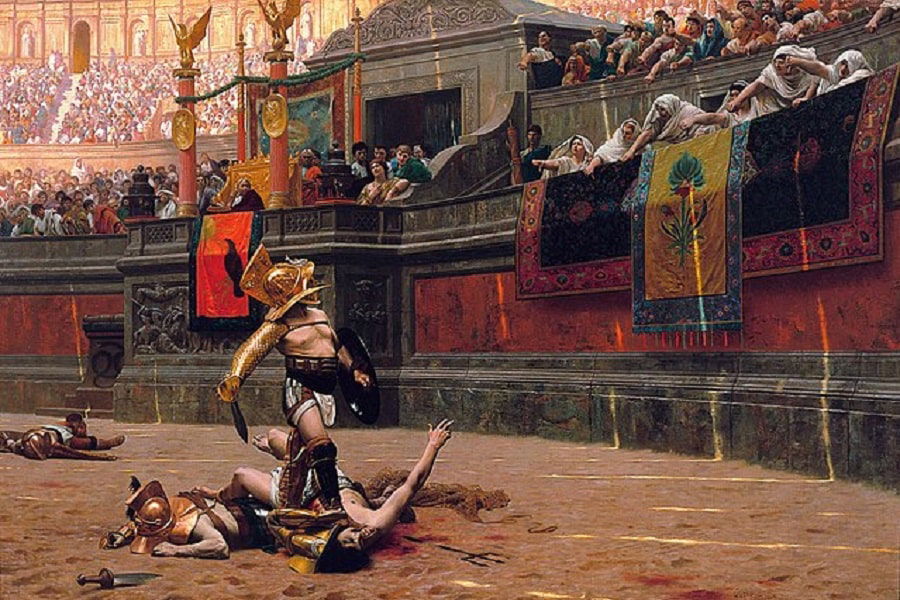
Why Did Gladiatorial Events End?
The decline of the gladiator occurred parallel to the rise of Christianity in ancient Rome. By the 3rd century CE, Christian writers like Tertullian were producing sermons and works decrying the sport, calling them a clear “human sacrifice” and murder. In St Augustine’s famous Confessions, the writer opened up about the power of the spectacle and its ability to strike “a deeper wound in his soul.” Speaking of a friend who, despite not wanting to go to games, went and became enthralled, St Augustine said:
“For, directly he saw that blood, he therewith imbibed a sort of savageness; nor did he turn away, but fixed his eye, drinking in madness unconsciously, and was delighted with the guilty contest, and drunken with the bloody pastime. Nor was he now the same he came in, but was one of the throng he came unto, and a true companion of those who had brought him there. Why need I say more? He looked, shouted, was excited, carried away with him the madness which would stimulate him to return, not only with those who first enticed him, but also before them, yea, and to draw in others.”
In 325, Emperor Constantine attempted to ban some forms of the games, specifically those where criminals were forced to fight to the death. However, even toward the end of his reign, he would allow for combat entertainment during celebrations. By the mid-5th century, the games were seen as part of other pagan festivals, and leaders banned them. There was little push-back against these bans as audience numbers were already dropping. Chariot races, however, were still quite popular, even those that involved some elements of combat.
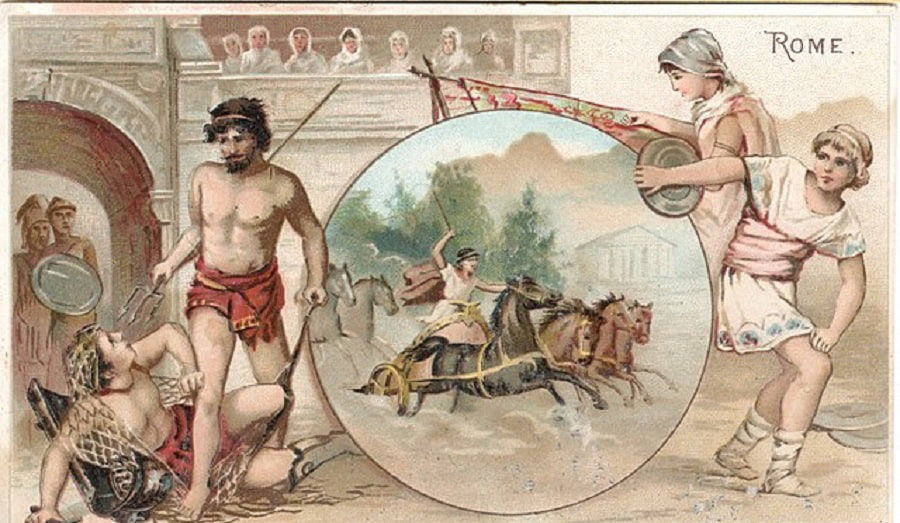
READ MORE: The Complete Roman Empire Timeline: Dates of Battles, Emperors, and Events
What Are Popular Modern Depictions of Gladiators?
Gladiatorial combat has always been an entertainment of interest for humans, re-inventing itself in the fighting games of medieval knights and today among boxers and MMA fighters. However, modern media has also found itself compelled to revisit ancient Rome and those first gladiators.
Spartacus
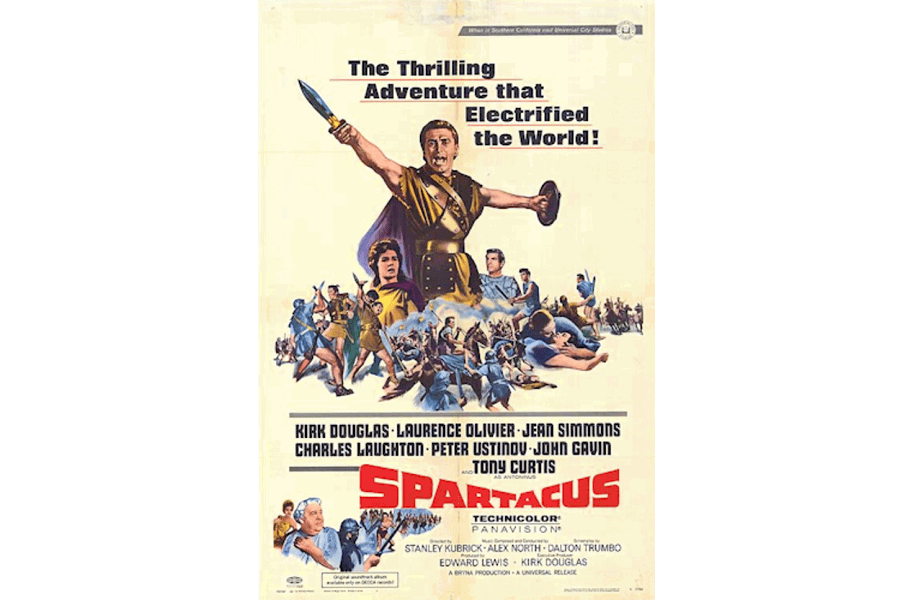
In popular media, one of the most important works which involved gladiatorial combat was the 1960 film, Spartacus, directed by Stanley Kubrick and starring Kirk Douglas. This fictional telling of the Thracian slave’s escape and rebellion, with a hopeful ending that belies the historical defeat. This film contains that famous scene in which all the other soldiers stand up claiming “I am Spartacus”, rather than letting their leader be discovered. Spartacus won four Academy Awards and was the biggest financial success the studio had experienced at that time.
Gladiator
This 2000 film by Ridley Scott starred Russell Crowe as a Roman general who is betrayed and sold into slavery, only to become a gladiator. While the film has characters named after real-life emperors and generals, the story it tells is completely fictional. The film is also considered quite unrealistic in depicting a crowd that would support a “merciful” gladiator. However, the idea that an emperor or general would step into the ring with a gladiator is not as ridiculous; the real-life Emperor Commodus declared himself “Champion of secutores; only left-handed fighter to conquer twelve times one thousand men.”
READ MORE: Roman Emperors
The Hunger Games
The book by Suzanne Collins, and later movie adaptations, rely heavily on presenting a world much like ancient Roman society. While the richest classes hold extravagant orgies and sit in comfortable chairs, they watch the conquered and the poor fight in an arena to the death. Like the gladiatorial shows of old, the “hunger games” include fighters both forced and voluntary, and many of the participants are part of gladiatorial schools. Wild animals are introduced to later hunger games, and the winners are given gifts and rewards from their patrons.
Most importantly, the series ends in a rebellion quite similar to the slave revolt of Spartacus and stands for a story about class warfare.